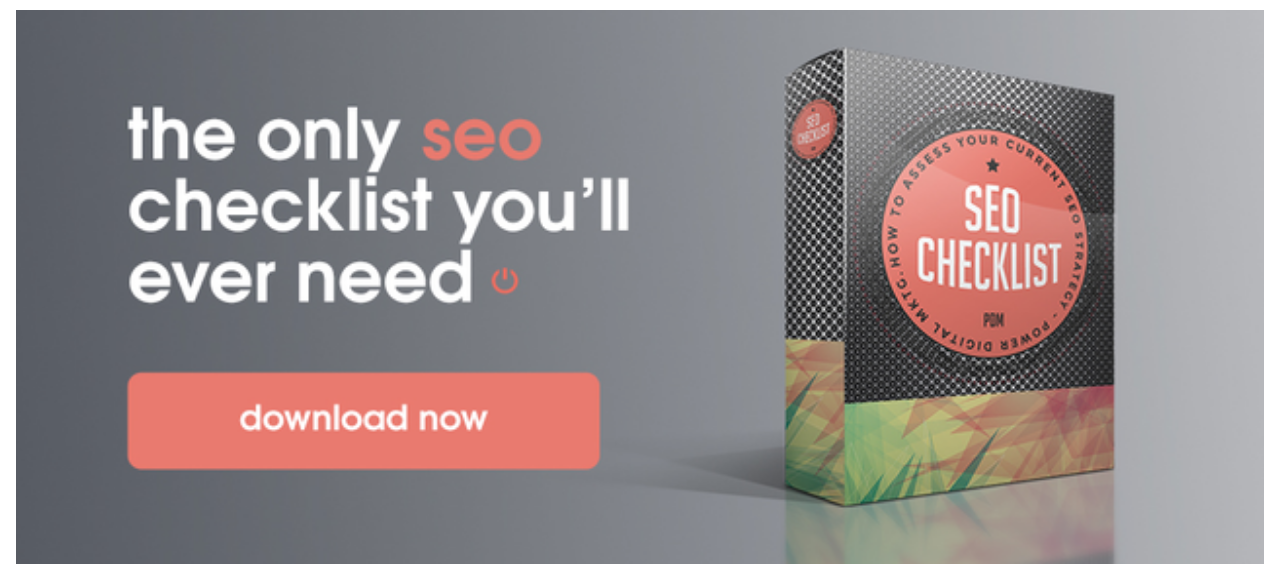The Ultimate Local SEO Checklist for 2018

OK, first things first. What is local SEO?
Local SEO is a term that you should not only become familiar with but also learn how to effectively implement if you’re serious about growing your business online in 2018. It’s a strategy that allows you to promote your products and services to customers right there in your local area at the exact moment they are searching for what you provide.
Web browsers by the millions are using local search each and every day to find their best local business for whatever it is they may need.
Having strong local SEO puts you in front of these people when they actually want to see you.
This makes it different than most other marketing strategies. Potential customers will reach you on their terms, not at random like they do with many other forms of advertising. Local SEO is supremely targeted.
Using a variety of tactics, local SEO gets your site ranked in Google as well as on business sites like your Google My Business listing, Yelp, Foursquare, Superpages, Yellowbook, and others. It may also involve using localized content on your website, as well as online reviews and more.
To break things down a bit further and give you a one-stop outline you can use to build your strategy, we’re going to dig into our ultimate local SEO checklist for 2018. Off we go!
Local Landing Page Optimizations
When a potential customer searches for your product in your area, your goal is to show up at the top of the results page. If the user then clicks on your link, it will direct them to your landing page.
1. Title Tag
Your title tag is what you declare as the title of your page within the HTML code. The title tag is what actually shows up on the search engine results page (SERP) as your clickable headline. This makes them of utmost importance because you need your title tag to be relevant to your topic to rank highly on the results pages you want them to. A good rule of thumb here is to include your target keyword and the location of your business in your title tag.
2. Meta Description
Your meta description is the text that appears next to your title tag on the SERP. Here, you’ll also want to include your location and keyword, however, it’s a good idea to break them up within the text so that Google doesn’t penalize you for trying to over-optimize exact match keywords. Your meta description should be relevant and draw your target customers to your site by giving them the answers they are searching for.
3. Clean URLs
Having a clean URL has the double positive effect of helping to improve your user experience while also allowing your link to be more SEO friendly. When a user sees a complex URL, it may intimidate them and make them think the site is spam, while a clean URL gives them a clear picture of what they are going to find on the landing page.
4. Optimize Images & Logos
Having effective SEO on your landing page means more than just slapping your logo and a cool picture on the page. Take things a step further and optimize your images and logos by having your keywords in the file name, using ALT text in the tag, as well as having the logo or image link back to your homepage. This all can help boost your landing page SEO ranking.
5. Schema
Schema is a powerful but little-utilized form of SEO that helps you give specific information to someone searching for your business. To do this, you can add schema markup code to your landing page to give users more informative results from Google. For instance, a restaurant could show hours, specials, or an event calendar right there in the search results.
Google has many requirements for local business schema, but it will be worth taking the time to learn, as you can put incredibly timely and specific information in front of customers in your area. To see how you’re doing, you can actually test your local business schema by using this tool provided by Google.
6. Testimonials
Placing testimonials on your landing page helps win your potential customer’s trust. These can be in the form of placing logos of the companies who use your product on the page, statistics, quotes, and more. Without a recommendation, how will a user know they can trust your product?
 Google My Business Page
Google My Business Page
Google My Business helps you to set up your business across Google, including on Search, Maps, and Google+ in one place. The simple set-up process can be incredibly important to the online presence of your business, and with some fine-tuning, you can position your business well to be as visible as possible to your target customers.
1. Claim Your Google My Business Page
The first thing you should do is claim or create your Google My Business listing. If you already set yours up in the old platform, Google Places or Google+ Local, your listing should have rolled over, but to be sure, log in and verify your business information is showing up accurately on Google. You can follow these instructions from Google to claim your business listing.
2. Google Posts
Google Posts is a newer feature that allows you to control what content shows up in SERPs, both in the sidebar on a desktop and right above your listing in the SERP for mobile. Posts can be up to 300 words long, can include images, and allow you to create a call to action.
3. Messaging
You can add a feature to your business listing that will allow customers to directly message your business. You will set up a number that can receive SMS messages, and will then be able to chat with any customer who messages you. Just make sure to reply as quickly as you can since Google will display your average response time.
4. Q&A
The Q&A feature allows visitors to ask questions before they even click on your site. You can answer client questions directly and also add commonly asked questions with your answers.
5. Appointment Links
You can even add a URL that allows customers to make appointments right there in the SERP or in Maps. This gives users another easy way to contact your business directly and move quickly toward a potential sale.
Directory Submissions
Directories are a major local SEO ranking factor and can be valuable for local SEO if you use them carefully.
1. Top 50 citations
As for which directories to submit your business, there are plenty to choose from. Bright Local even created a handy list of the top 50 citations for you to consider. This should help you optimize where you want to have your business highly listed.
2. NAP Consistency
NAP stands for Name, Address, Phone, and if you have NAP Consistency, it means your business’s contact information is listed the same everywhere on the web. This is important, because obviously, you don’t want your business listed incorrectly anywhere, leading your customers astray, but also because if there are any inconsistencies, search engines will think they are separate business listings, which will negatively impact your SEO.
3. Submit To Top Directories
The list of top directories will be very similar to the top 50 citations above. In fact, many of the sites will overlap. You’ll want your business to rank highly on any local directory site.
4. Fix Old Listings
If you find that you do have any duplicate listings due to incorrect NAP, or old listings that need to be updated, you’ll need to correct them to regain consistency and boost your local SEO. This is especially true for any business that either is going to move or has moved since you started building a presence online. Dig through and make sure all of your citations are set to your current, accurate information so the search engines can build confidence in you.
Reviews & Ratings
Reviews and ratings are incredibly important to your local SEO as well as your brand reputation. One site even ranked them as the most prominent ranking factor of last year. But how do you get them to work in your favor? Let’s take a quick look.
1. Responding to Negative Reviews
At some point, your business is most likely going to receive a negative review online, and that’s okay! It’s all part of doing business, however, it’s how you manage the negativity that matters. You don’t want to have snap reactions, ordering to have the review taken down or bark back at the poster with vitriol. Instead, be appreciative of the feedback, diffuse the situation and offer some form of resolution while pointing out the positives where you can.
2. Generate Reviews
If you are a new business or just want to generate more reviews, there are several strategies you can use. Directories like Yelp are review-based, while there are other sites available for you to collect reviews to your own page. You can also request them through emails to your customers or transcribe them over the phone.
Summary
Following this checklist is a great way to give your local SEO a major boost in 2018. Once you set things up, you can continue to make tweaks throughout the year to find out what works best for you. High-fives for high rankings!
Our Editorial Standards
Reviewed for Accuracy
Every piece is fact-checked for precision.
Up-to-Date Research
We reflect the latest trends and insights.
Credible References
Backed by trusted industry sources.
Actionable & Insight-Driven
Strategic takeaways for real results.







